Climate & Weather
Week
GEOS 3410
🪑
Week Schedule
Tuesday
- Wrap-up ocean motion
- Weather
- Clouds
Thursday
- Climate-weather oscillations
- Teleconnections
Outside of class
- Prepare for Midterm Assessment I (next week)
Midterm Assessment I
| Duration | 75 min. (160 min. available) |
|---|---|
| Notes | One 8.5×11" sheet (front/back) |
| Multiple choice | Yep |
| Short answer | For sure |
| Diagrams | Of course! |
| Extra credit | 3 |
Subpolar surface circulation
2 sub-Arctic gyres, 1 Antarctic circumpolar current

Subpolar surface circulation
Vertical motion in gyres
| Region | Water flow | Vertical motion |
|---|---|---|
| Subtropics | Convergence | ↓ Downwelling ↓ |
| Subpolar | Divergence | ↑ Upwelling ↑ |
Primary production — a reprise
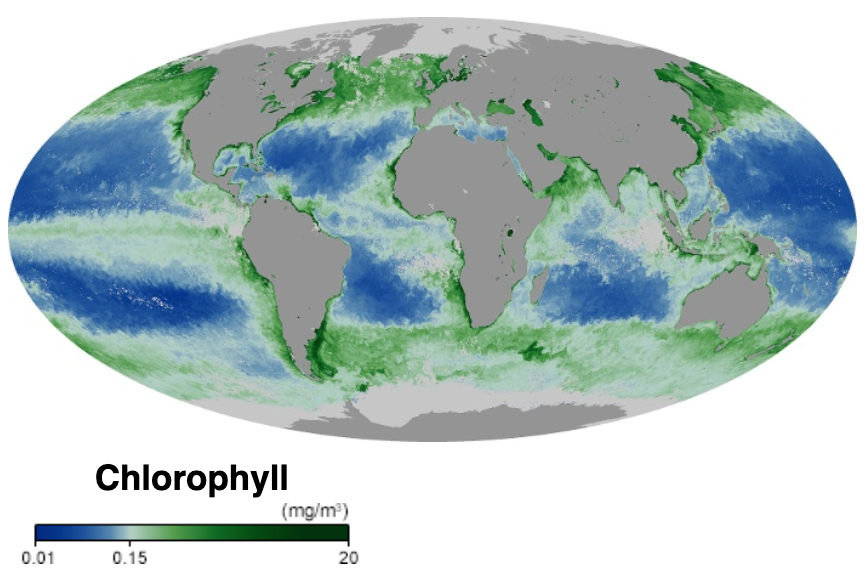
- Abundant nutrients ↑ productivity
- Nutrients accumulate in subsurface (biologic pump)
- Upwelling (shallow thermocline) → abundant nutrients
Walker Circulation
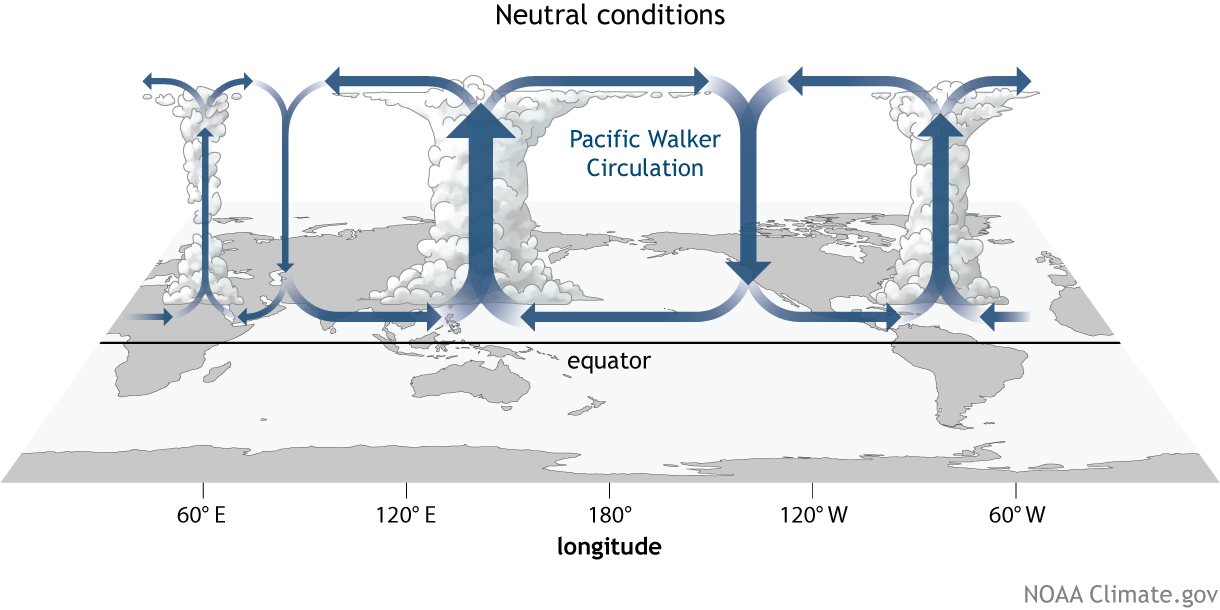
Weather
Atmospheric pressure
What looks familiar? What looks surprising?
Low Pressure (T)
High pressure (H)
Local H/L Pressure zones shift with seasons
What role do continents play?
Low Pressure (T)
January
High pressure (H)
Local H/L Pressure zones shift with seasons
What role do continents play?
Low Pressure (T)
July
High pressure (H)
Climate
An atmospheric circulation model + continents and ocean circulation(add large-scale complexity in a predictable way)
Weather is the small-scale unpredictability.
Tropical cyclones
Cross-section of a mature tropical cyclone
Adapated from Wikimedia image
(hurricane, typhoon are regional names for a tropical cyclone)
Tropical cyclone tracks
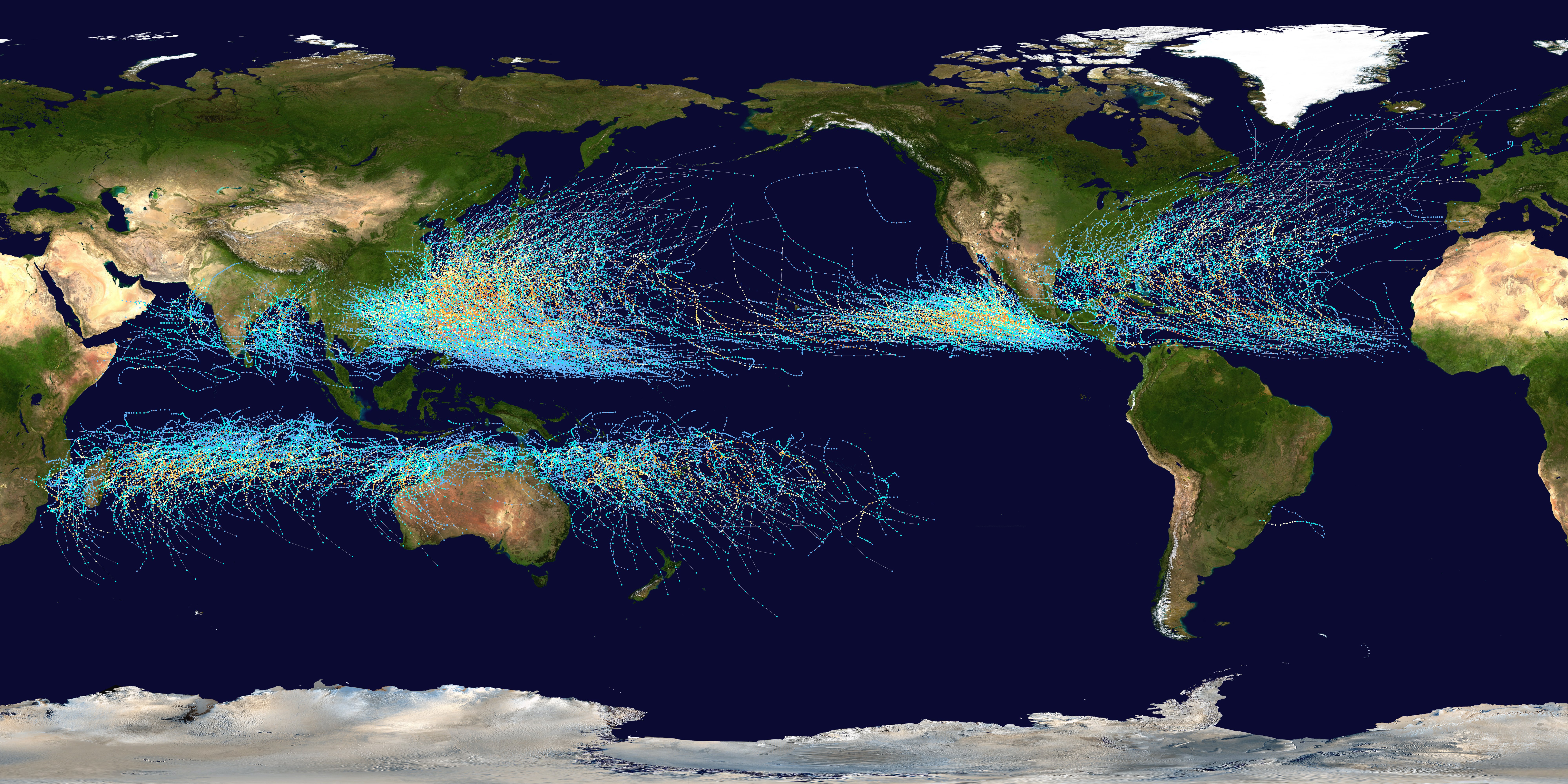
Where are these going? Why? Where do they stop? Why?
Anticyclonic systems (rarer)
Austrlaian High
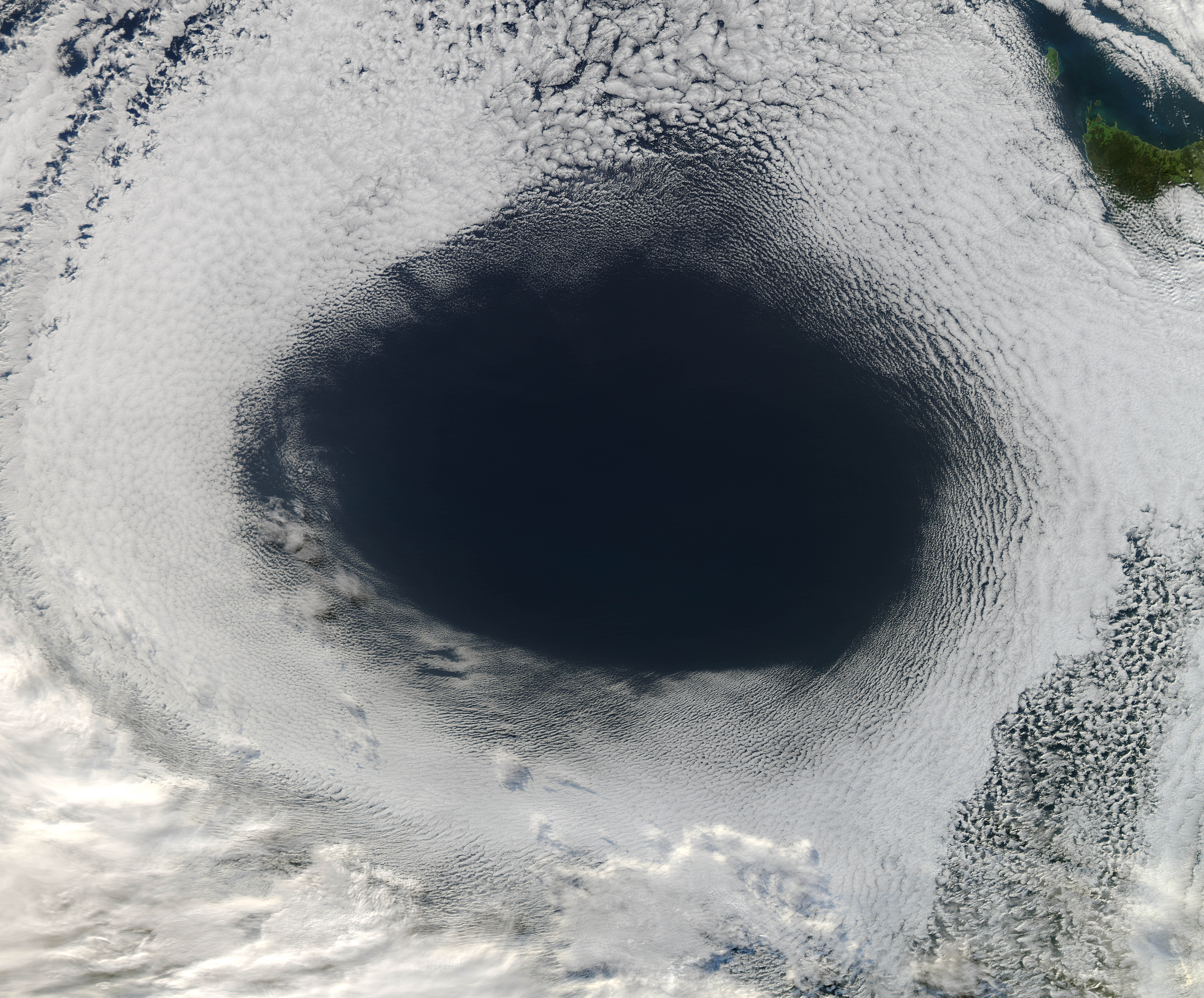

Rare anticyclonic storm/cloud system
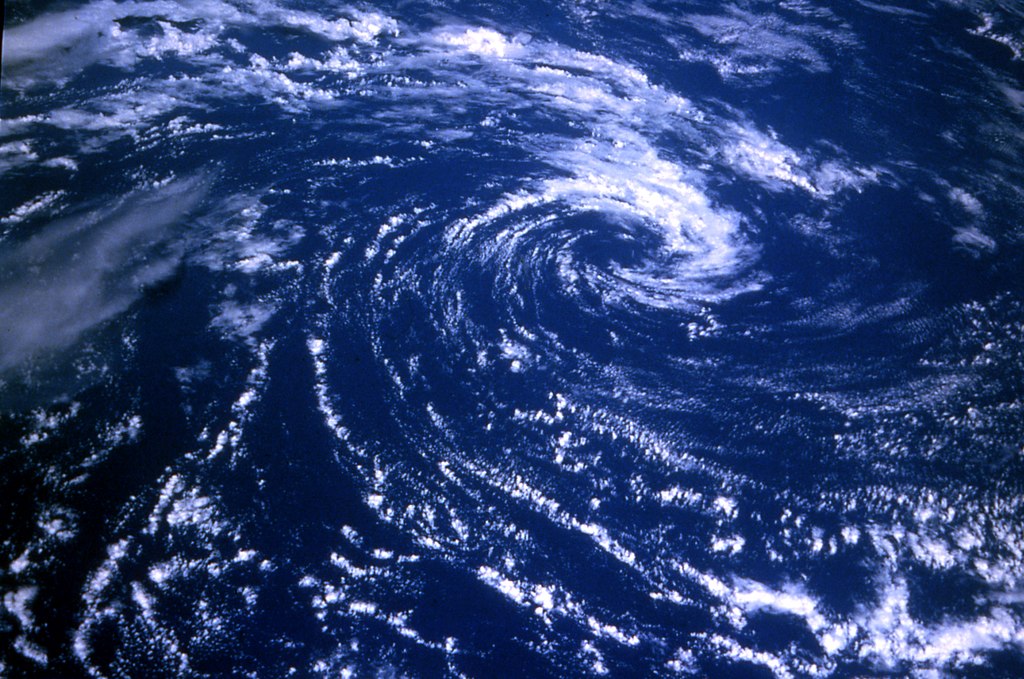

Tropical cyclones in a warming climate
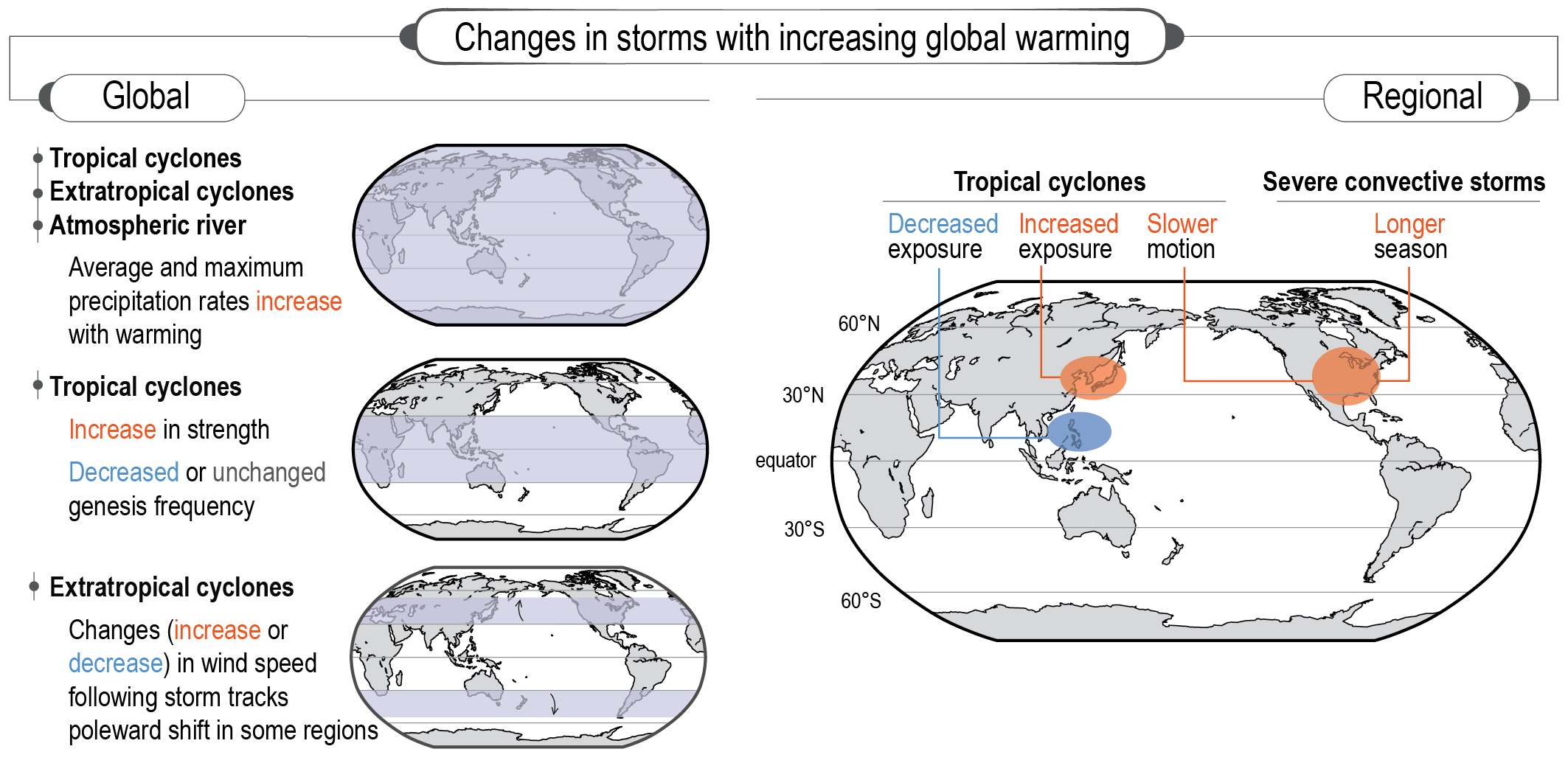
Slower motion of tropical cyclones and severe convective storms
Climate & weather in the Mid-latitudes
Jet streams: high-altitude winds

The polar front: Rossby waves in the polar jet streams
Why are the lobes of cold air Low pressure and warm air High pressure?
(hint: think about the directions of airflow in the jet stream)
(hint: think about the directions of airflow in the jet stream)
Rotating systems
| Pressure | Motion | NH rot. | SH rot. | |
|---|---|---|---|---|
| Cyclone | Low | Inward | ccw ↺ | cw ↻ |
| Anticyclone | High | Outward | cw ↻ | ccw ↺ |

Low-pressure frontal systems


⛈️ Weather!! ⛈️
Cold front advancing from West 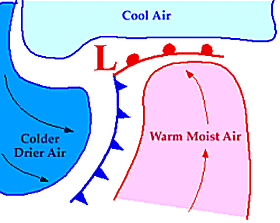

Warm front advancing from West 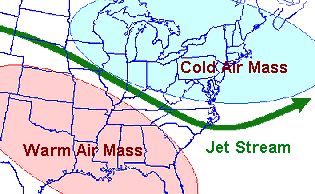

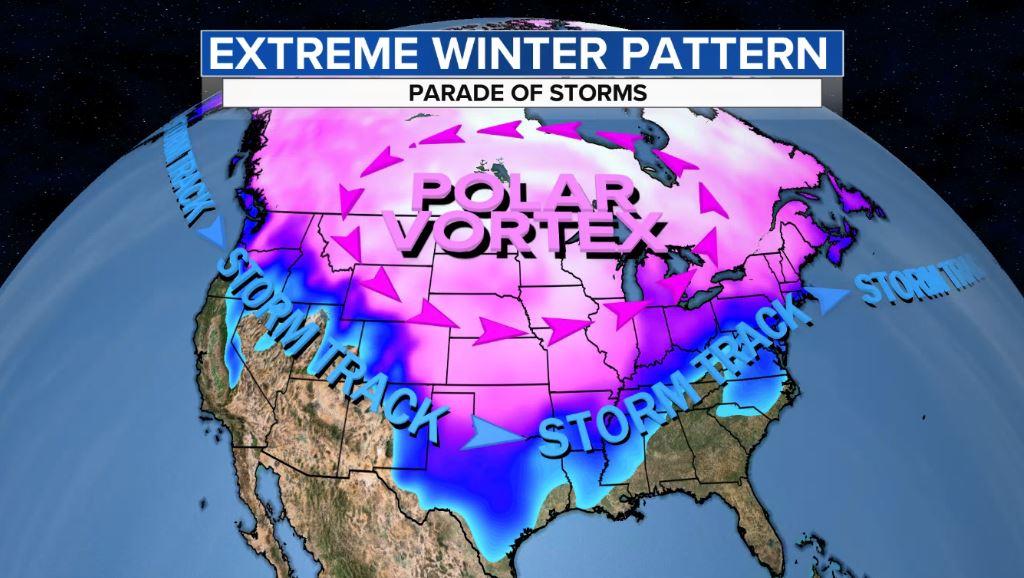
Monsoon climates
Monsoon climates
Dramatic seasonal changes in prevailing wind direction and precipitation
Monsoon climates
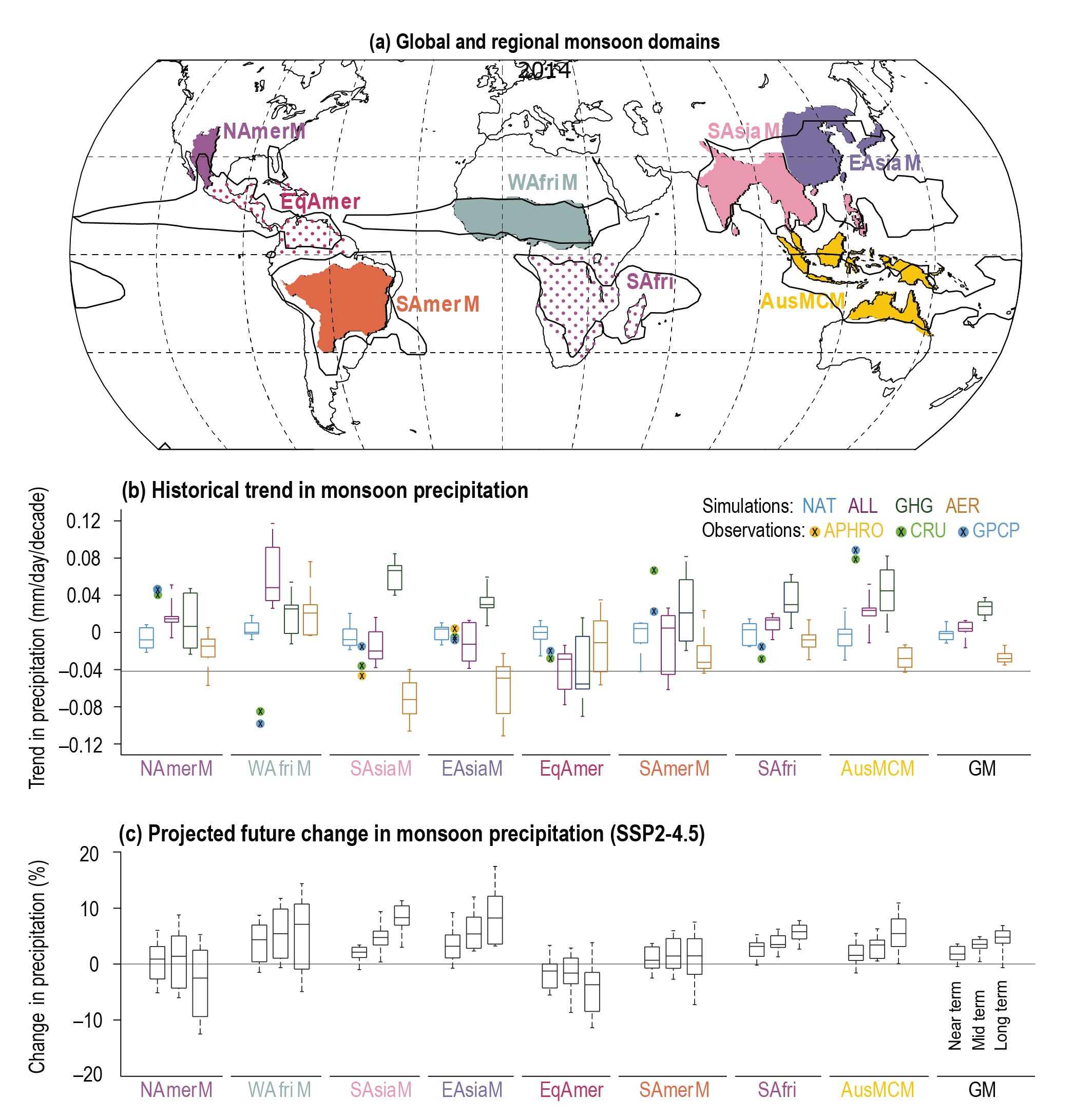
Monsoon climates

Extreme weather
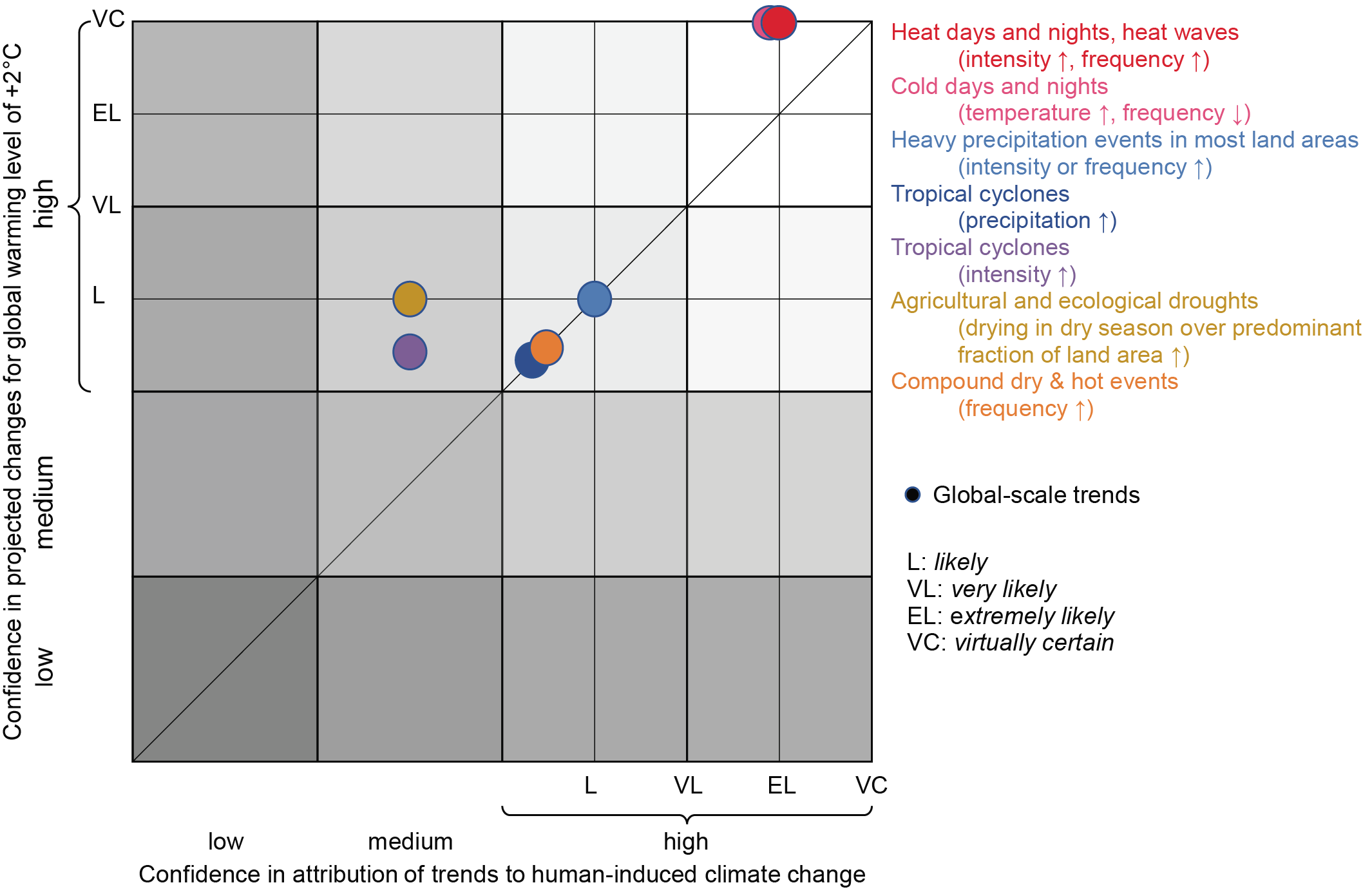
☁️ Clouds ☁️
Cloud types
Cloud types
| Cirrus | wispy, icy | ascent of warm, dry air |
|---|---|---|
| Cumulus | tall columns | focused upward convection |
| Stratus | layered sheets | diffuse upward convection |
Subtypes are not important (to us)
Complex role of clouds in climate
| Elevation | Cloud types | Visible/UV | Infrared |
|---|---|---|---|
| High | cirrus | weak reflection | strong absorption |
| Low | cumulus, stratus | strong reflection | absorption & emission! |
Complex role of clouds in climate change: net warming
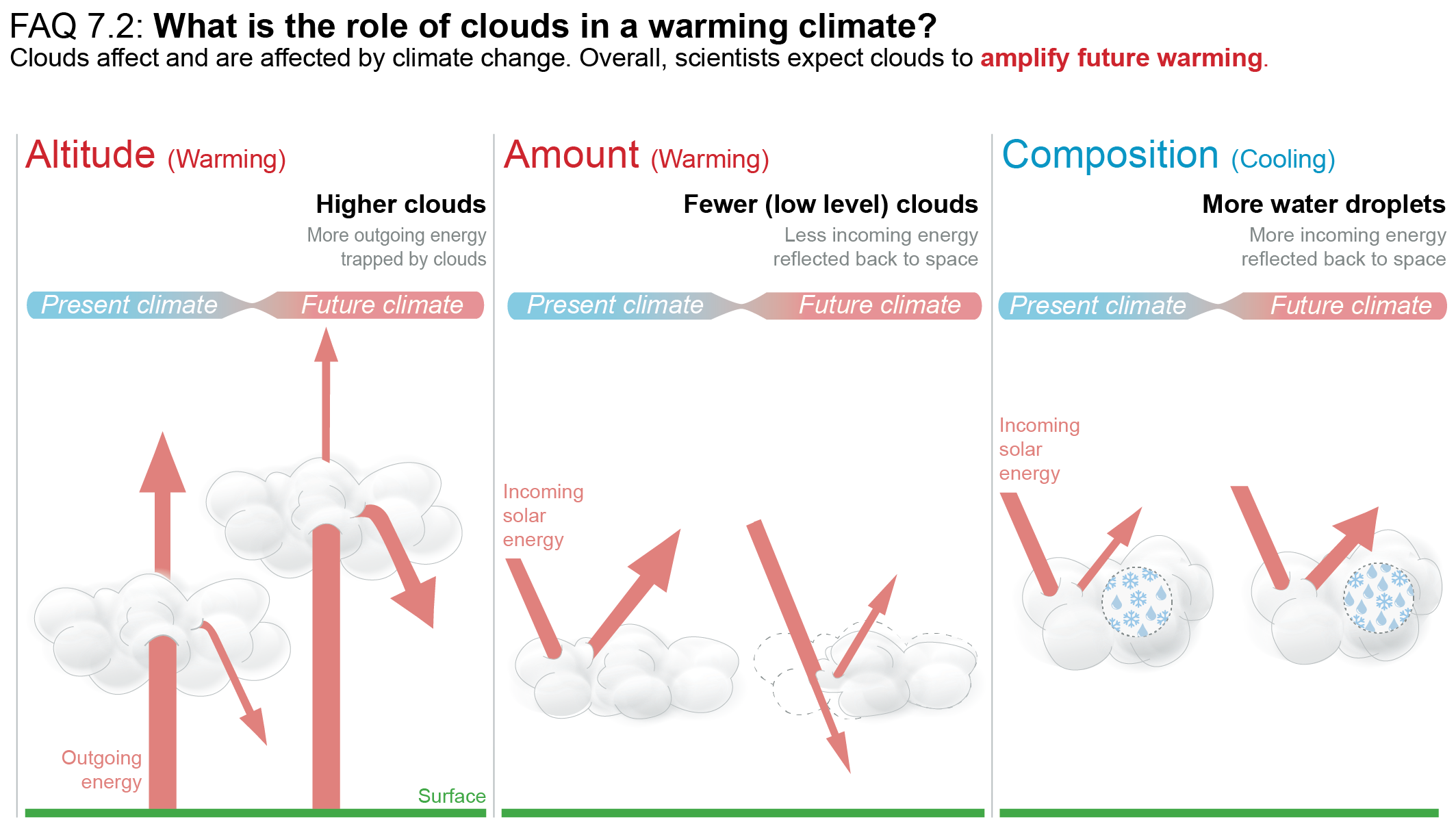
〰️ Oscillation Station 〰️
Climate oscillations & teleconnections
| Oscillation | Variations between two (climate) extremes. May or may not be periodic |
|---|---|
| Teleconnection |
Links between widely separated weather phenomena. Establish climate patterns spanning 1000s of km. |
El Niño — Southern Oscillation (ENSO)
El Niño — Southern Oscillation (ENSO)
"Walker Circulation"El Niño — Southern Oscillation (ENSO)
Weaker trade windsEl Niño — Southern Oscillation (ENSO)
Especially strong trade windsEl Niño — Southern Oscillation (ENSO)
SERC (originally from NASA Earth Observatory)
Measuring ENSO
Southern Oscillation Index (SOI)
Difference in sea level pressure between Tahiti and Darwin (Tahiti – Darwin)
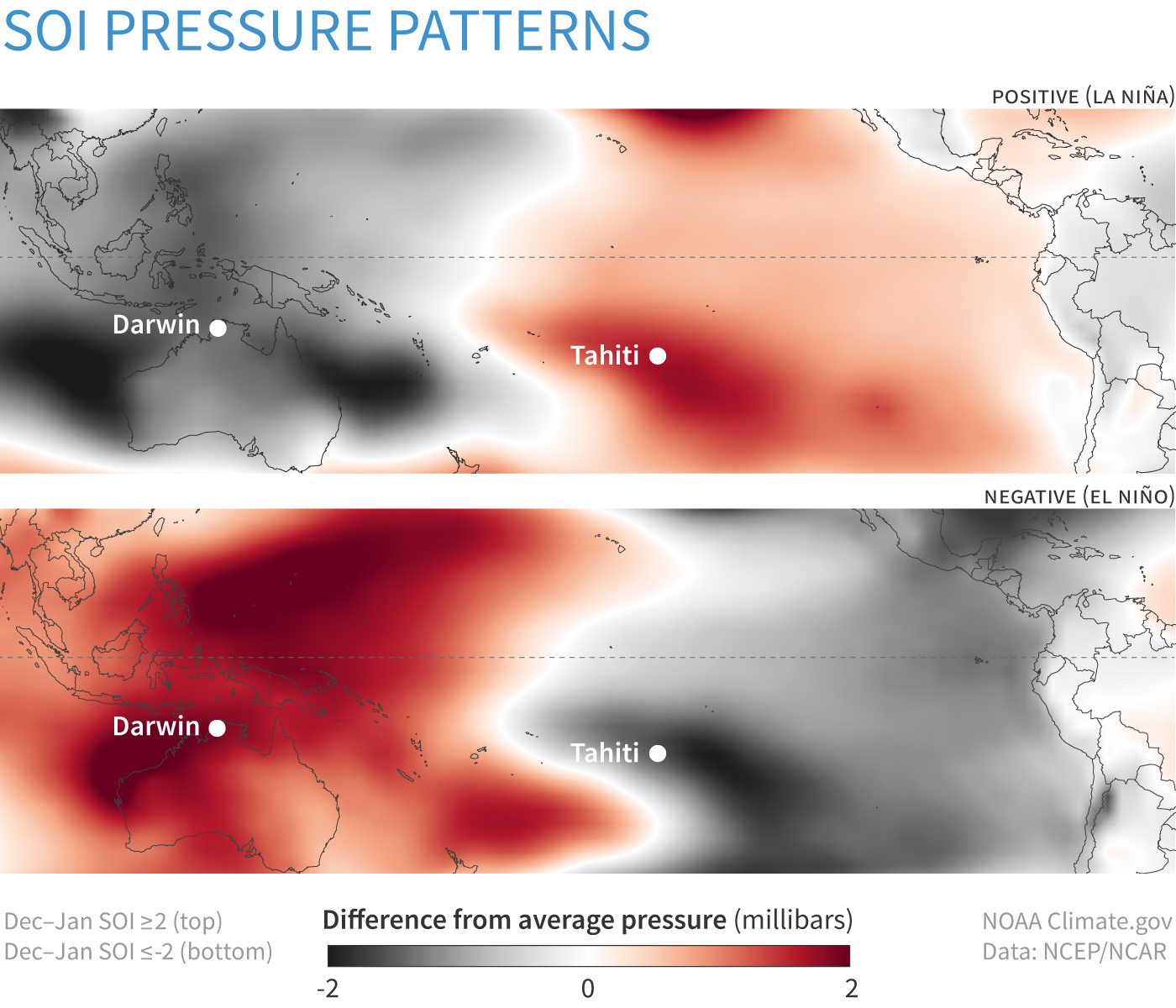
Measuring ENSO
Southern Oscillation Index (SOI)
- Events occur every ∼2–7 years.
- EN lasts 9–12 months, more common
- LN lasts 1–3 years
Adapted from Wikimedia. El Niño / La Niña event when 7 ≤ | SOI |
ENSO beyond the equatorial Pacific

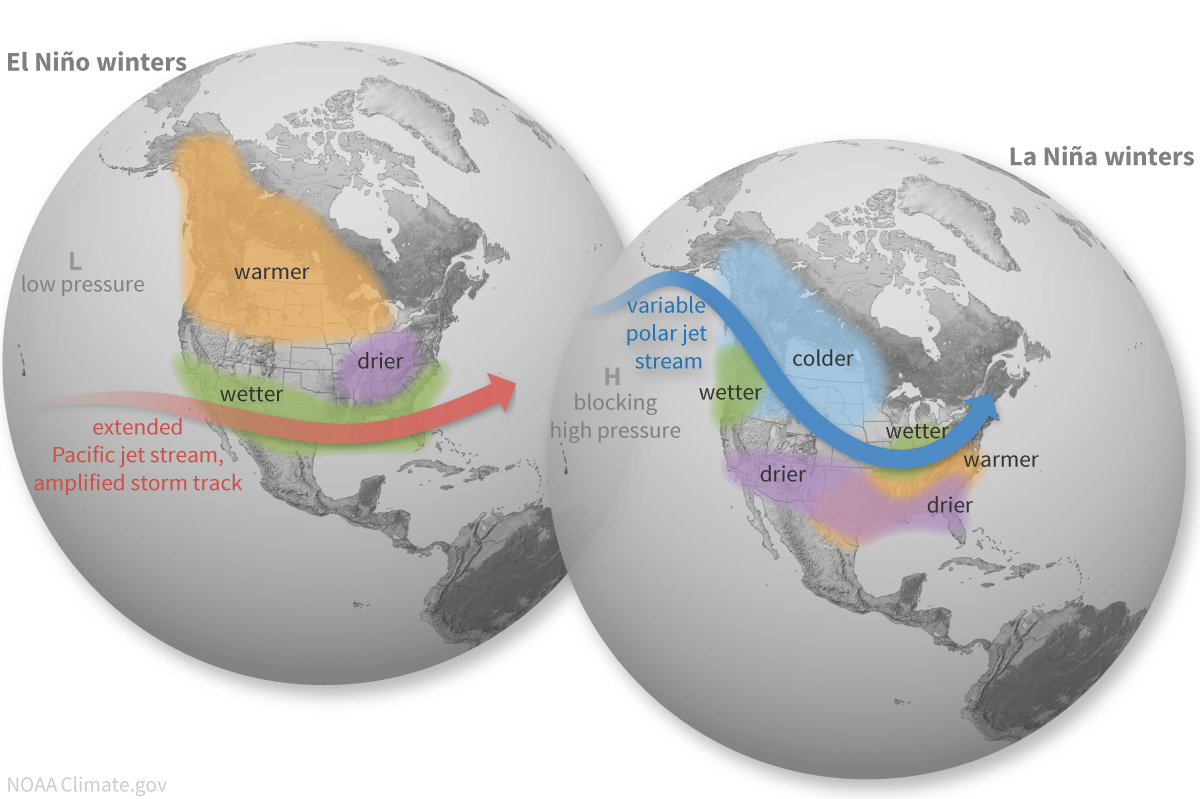
Global impacts
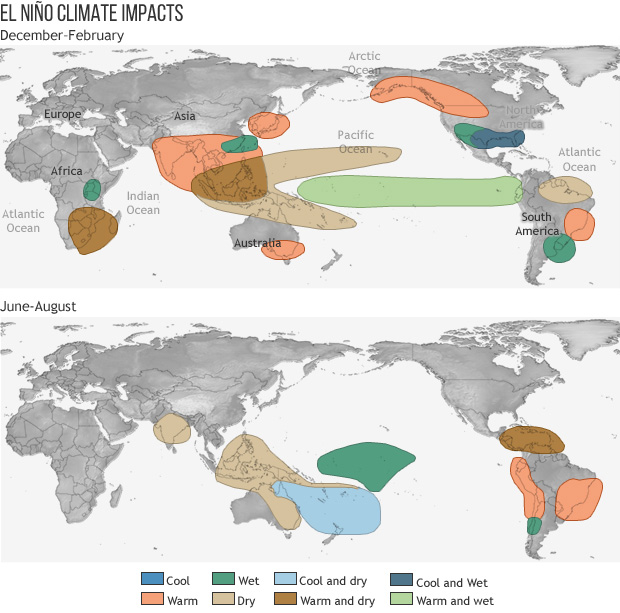
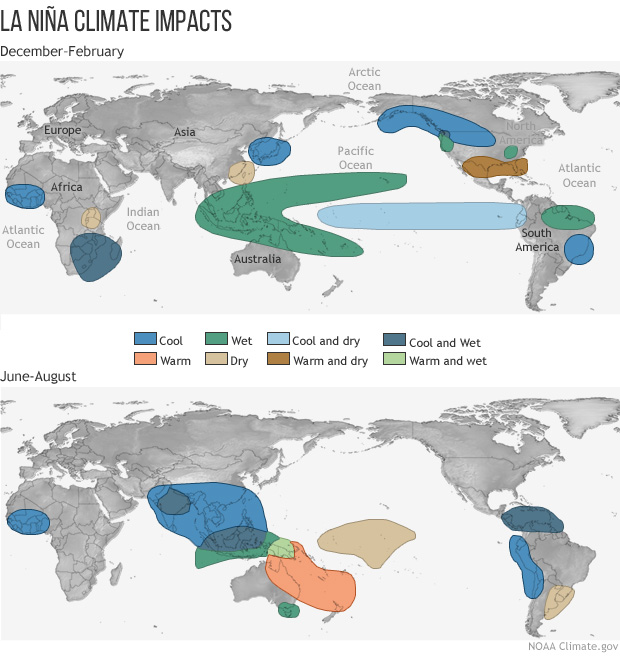
ENSO in a changing climate
Stronger than historic changes → ≥1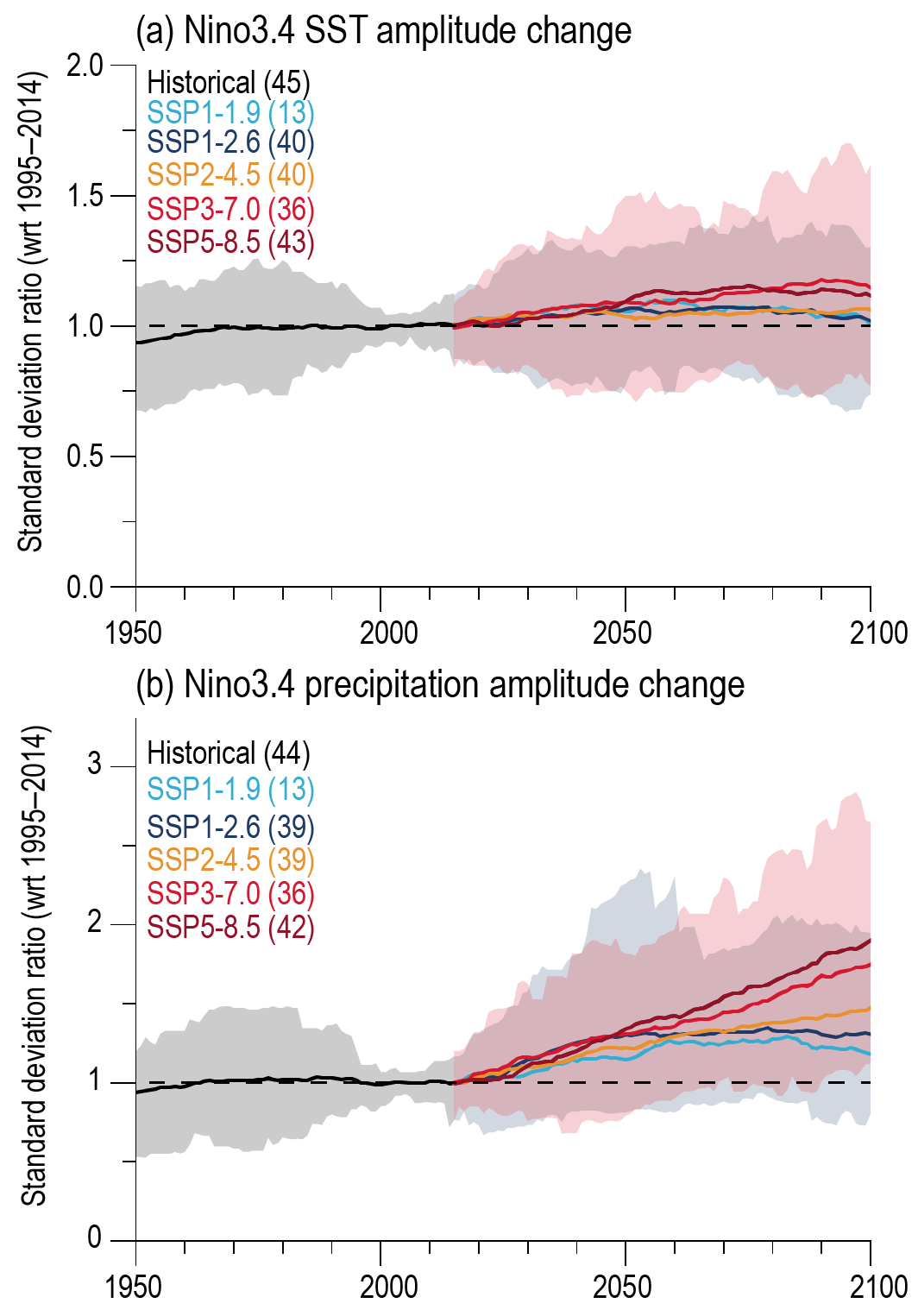
ENSO in a changing climate
Stronger than historic changes → ≥1
Pacific Decadal Oscillation (PDO)
PDO Index: N. Pacific SST

Period ≈ 50–70 years
PDO
Warm (+) Phase
Warm central, cooler in N & S.
Cold (–) Phase
Cool central, warmer in N & S.
Combination of multiple processes spanning tropical to polar latitudes.

ENSO – PDO Connections through the atmosphere
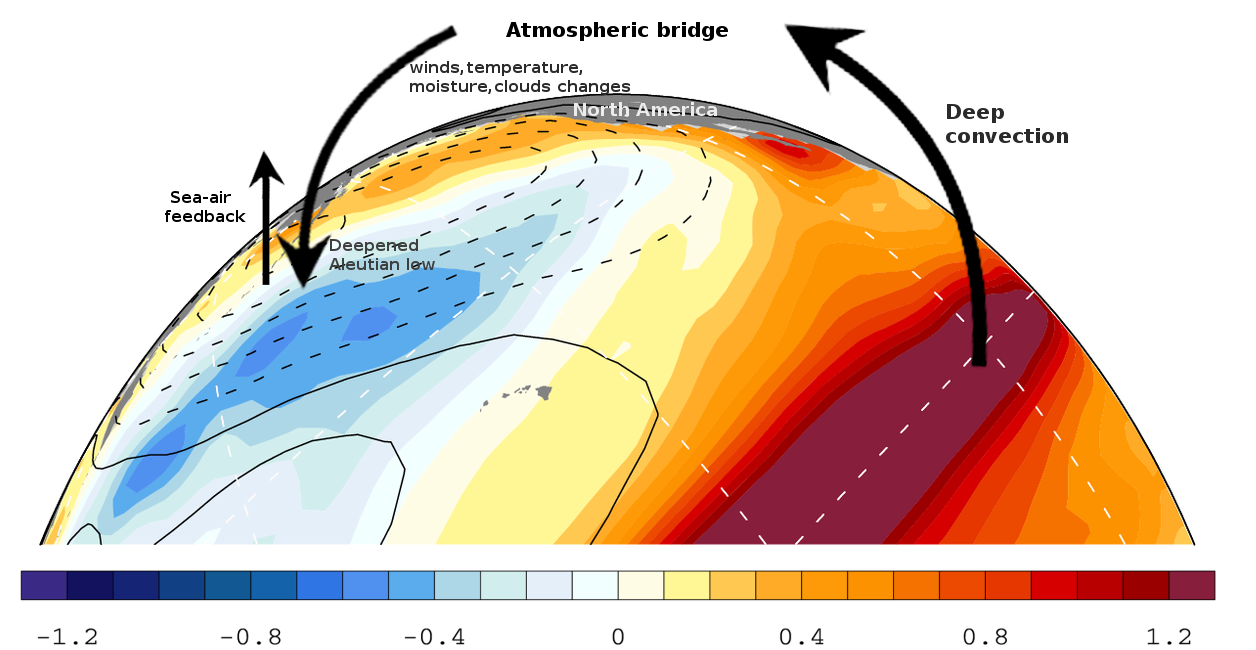
Persistent PDO phases
Centennial timescales: 1000 CE – present
North Atlantic Oscillation (NAO)
North Atlantic Oscillation (NAO)
Changes in NH winter storm track and trade wind strength on timescales just longer than weather (few weeks).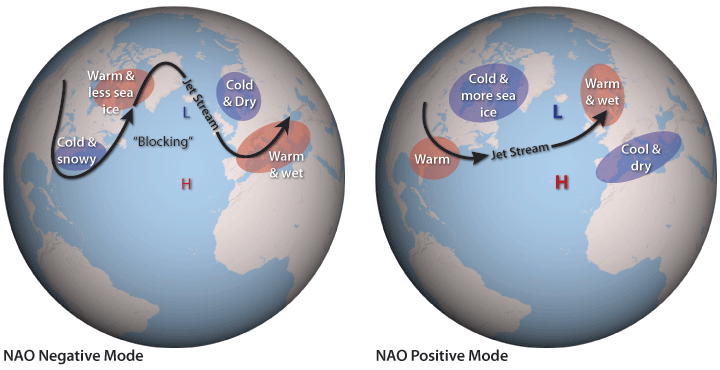
Seasonal-scale variability with weak longer term patterns
Teleconnection Alert!
NAO is (probably?) the Atlantic portion of the Arctic Oscillation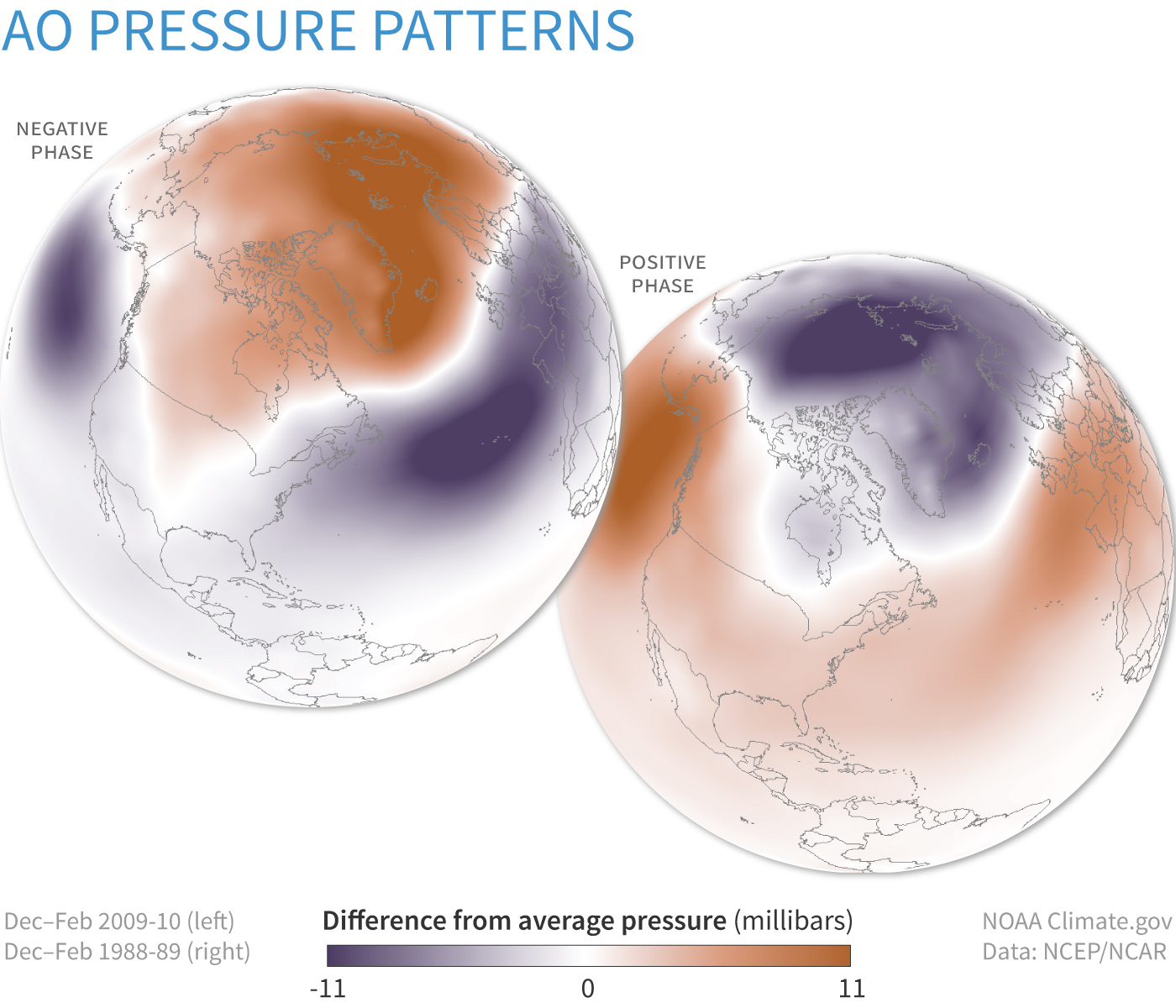
AO Index Timeseries (1950–2016)
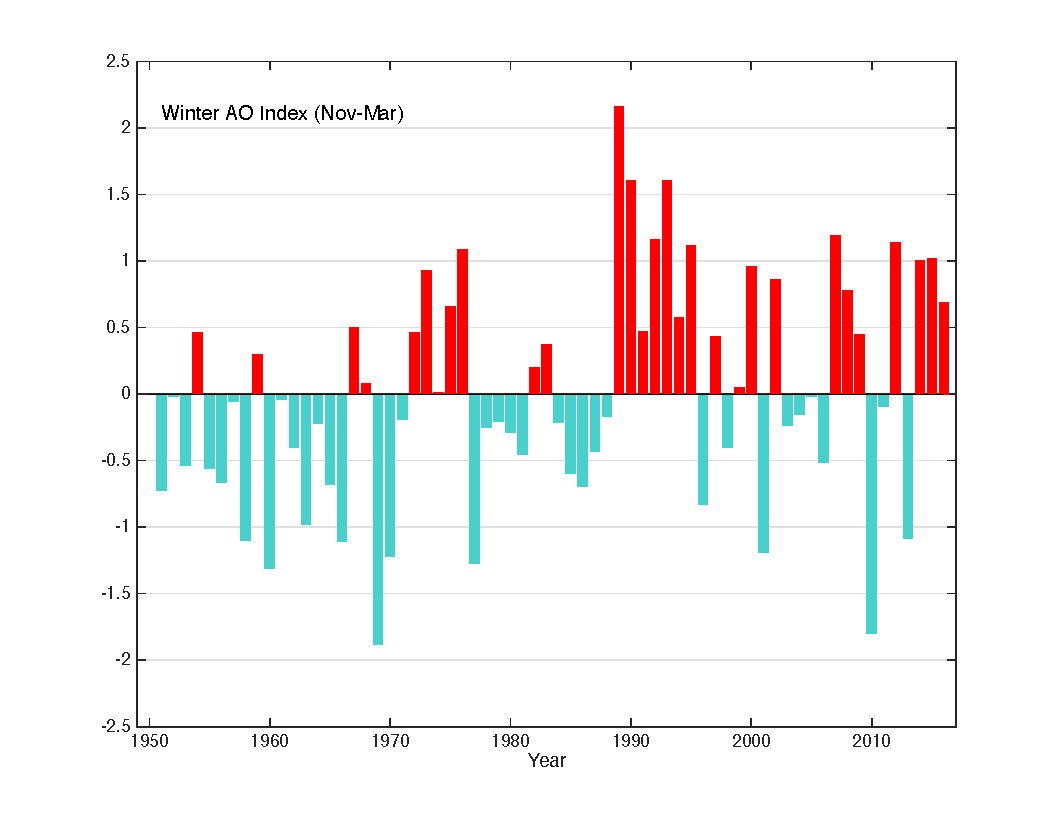
∼60 day period with longer wavelength variability
Atlantic Multidecadal Oscillation (AMO)
Index from detrended North Atlantic sea surface temperature
Period of 60 to 90 years.Atlantic Multidecadal Oscillation (AMO)
- Associated with hurricane frequency
- Perhaps driven by small variability in thermohaline circulation
- Perhaps not an oscillation at all, but driven by volcanism (Mann+ 2021)
Lab this afternoon in MMS 273
Bring a computer/tablet
Next Week ()
- Readings: Syllabus / Canvas
- Midterm Assessment I on Thursday (lab meeting)
- Study guide
- Review packet
- Tuesday: Review
- Thursday: Intro to 🧊 Cryosphere 🧊

